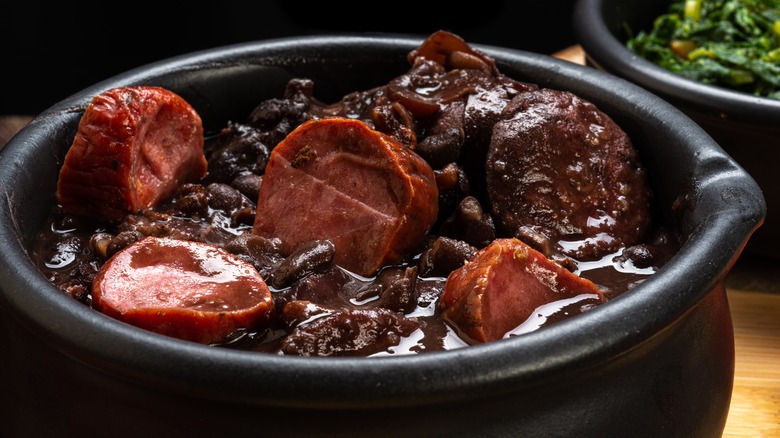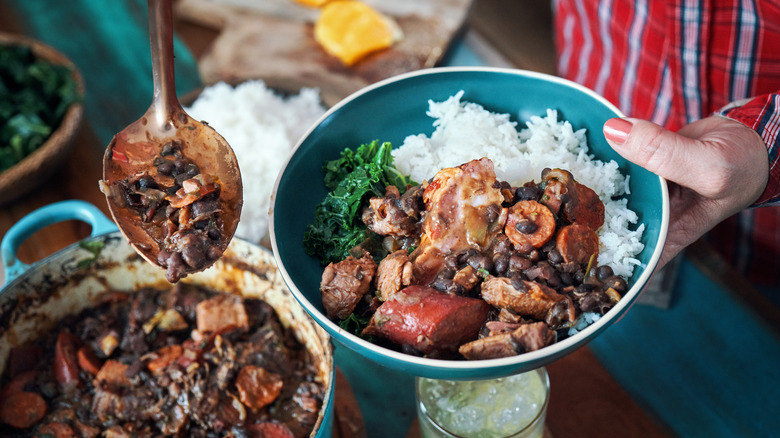How Feijoada Became Brazil's National Dish
Feijoada is a Brazilian dish made from rice and beans, straightforward and unglamorous, and made properly, it takes hours to complete. It's a timeless and widely popular meal, enjoyed everywhere in Brazil from steakhouses to home kitchens, but it's also an important taste of Brazilian history and culinary tradition.
Feijoada may be a symbol of community today, but it originated in the big houses of sugarcane and coffee plantations. The dish was an innovative patchwork of beans and meat combined into a hearty stew, greater than the sum of its parts, which could be made in large batches with minimal preparation. More specifically, when enslaved people in Africa were brought to Brazil by Portuguese slave owners during the 16th century, feijoada came with them. By the time Brazil was liberated from Portugal in 1824, feijoada had fans from all social classes and walks of life. It quickly emerged as the most fitting candidate for Brazil's national dish as the newly independent country stepped into its own cultural identity.
Historians debate whether proto-feijoada was created in the kitchens of enslaved Africans as a communal dish, or if they cooked it in the kitchens of their masters. The stew bears both African and Portuguese culinary influence, featuring a cooking technique for black beans that would have been popular in Africa, but also bearing similarities to Portuguese cozido, a stew made with pork and beans. The name Feijoada derives from the word feijão, meaning "beans" in Portuguese.
Colonization and modernism in the kitchen
In Brazil today, chowing down on a steaming pot of feijoada is a social event woven tightly into the country's culture. The stew is the centerpiece of regular extended lunches that last for hours with good company, usually taking place on weekends, especially Saturdays. Feijoada is a natural fit for these slow-paced affairs with its warming, comforting, dimensional flavors made to be savored.
At its fundamental level, this highlight of Brazilian cooking marries black beans, pork, and a combination of smoked meats, served with white rice and orange slices. Common proteins include crispy pork, bacon, pork sausages, smoked pork spareribs, chorizo, and cuts of beef like brisket or even beef jerky. Pig's ears, trotters, and beef tongue aren't uncommon ingredients, either (offal fans, rise up). Modern versions of feijoada often include vegetables like plantains, kale, potatoes, carrots, cabbage, and pumpkin. Per social custom, folks serve themselves from a large central pot. To complete the meal, the stew is often enjoyed with collard greens, topped with toasted cassava flour called farofa, and served with caipirinhas (cocktails made with cachaça).
As a historical symbol of communities coming together, feijoada remains a popular dish at ceremonious events like weddings, birthdays, and religious festivals. From Rio de Janeiro to São Paulo, Brazil's national dish is as much a meal as an event and a nametag of heritage, enjoyed without hurry surrounded by friends, family, music, and conversation.

